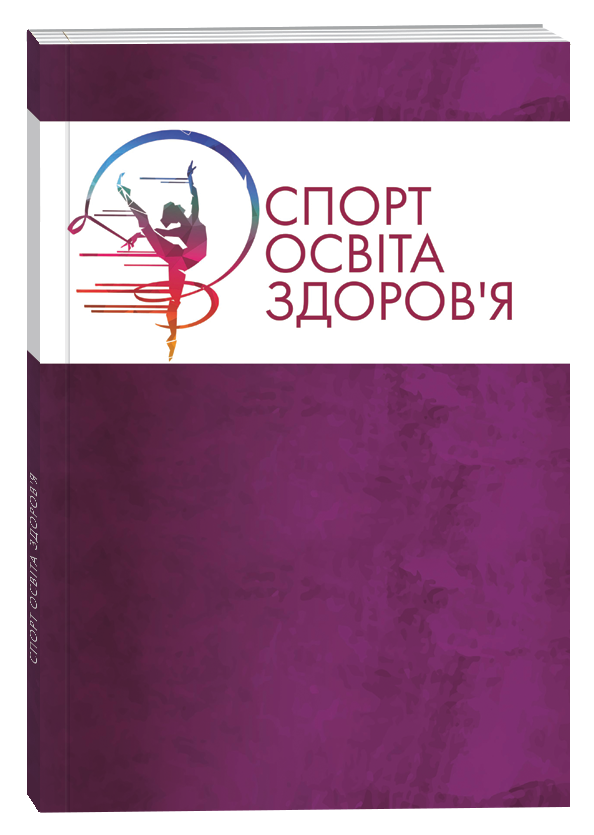CORRELATION BETWEEN PHYSICAL ACTIVITY, BODY MASS INDEX, AND HAND GRIP STRENGTH IN EARLY YEARS OF HEALTH SCIENCES UNDERGRADUATES
DOI:
https://doi.org/10.32782/sports-education/2025-1-8Keywords:
Physical activity, Body Mass Index, Hand Grip Strength, Allied Health Sciences, UndergraduatesAbstract
Background: Physical activity (PA), Body Mass Index (BMI), and Hand Grip Strength (HGS) collectively form integral components in gauging health and well-being. PA, spanning daily activities to structured exercise, influences body composition by expending energy, reducing fat stores, and enhancing muscle mass. BMI provides a standardized measure for assessing weight status, transcending age and gender, while HGS serves as a robust indicator of overall muscle potency. Understanding the interplay between these factors is crucial for comprehensive health assessment. Objective: To assess the correlation between PA, BMI, and HGS in early years of Allied Health Science undergraduates at the University of Peradeniya. Methodology: A descriptive cross-sectional design was employed, encompassing 212 second-year undergraduates from various Allied Health Science disciplines. Data collection included demographic information, anthropometric measurements, BMI assessment, PA level using International Physical Activity Questionnaire (IPAQ) short form and HGS evaluation using a hand dynamometer. Spearman’s correlation test elucidated associations between PA, BMI, and HGS. Results: Significant positive correlations were observed between PA and HGS on both dominant (r=0.535) and non-dominant sides (r=0.546), indicating increased PA associated with enhanced HGS. A weak positive correlation emerged between BMI and HGS on both sides (r=0.282 dominant, r=0.276 non-dominant), highlighting a subtle connection. A very weak positive correlation was found between PA and BMI (r=0.144), emphasizing multifaceted influences on BMI. Conclusion: This investigation elucidates nuanced correlations among PA, BMI, and HGS in early health science graduates. The findings underscore the importance of holistic perspectives in health-related data interpretation. These insights inform targeted interventions to enhance PA and well-being among Health Sciences graduates, with broader implications for public health.
References
1. Alsaqr, A. (2021.). Remarks on the use of Pearson’s and Spearman’s correlation coefficients in assessing relationships in ophthalmic data. 1–10.
2. Dhananjaya, J.R., Veena, H.C., Mamatha, B.S., & Sudarshan, C.R. (2017). Comparative study of body mass index, hand grip strength, and handgrip endurance in healthy individuals. 7(6), 594–598. https://doi.org/10.5455/njppp.2017.7.1030007022017.
3. Distefano, G., & Goodpaster, B.H. (2018). Effects of Exercise and Aging on Skeletal Muscle.
4. Ertem, K., Harma, A., Cetin, A., Elmali, N., Yologlu, S., & Bostan, H. (2005). An investigation of hand dominance, average versus maximum grip strength, body mass index and ages as determinants for hand evaluation. 13, 223–227.
5. Gutin, I., & Hill, C. (2019). HHS Public Access. 16(3). https://doi.org/10.1057/s41285-017-0055-0.In.
6. Khanna, D., Peltzer, C., Kahar, P., & Parmar, M.S. (2022). Body Mass Index (BMI): A Screening Tool Analysis. 14(1994), 1–6. https://doi.org/10.7759/cureus.22119.
7. Lad, U.P., Satyanarayana, P., & Shisode-lad, S. (2012). A Study on the Correlation Between the Body Mass Index (BMI), the Body Fat Percentage, the Handgrip Strength and the Handgrip Endurance in Underweight, Normal Weight and Overweight Adolescents. 51–54. https://doi.org/10.7860/JCDR/2012/5026.2668.
8. Lameira, T., Amaral, M., Torres, G., Arau, C., Monteiro, R., Teixeira, M., Vasconcellos, L., & Criso, M. (2019). Hand grip strength : Reference values for adults and elderly people of Rio Branco, Acre, Brazil. 1–13.
9. Liao, K. (2016). Hand Grip Strength in Low, Medium, and High Body Mass Index Males and Females. 3(1), 1–7. https://doi.org/10.17795/mejrh-33860.
10. Maddison, R., Mhurchu, C.N., Jiang, Y., Vander, S., Rodgers, A., Lawes, C.M.M., & Rush, E. (2007). International Physical Activity Questionnaire (IPAQ) and New Zealand Physical Activity Questionnaire (NZPAQ): A doubly labelled water validation. 9, 1–9. https://doi.org/10.1186/1479-Received.
11. Mahmoud, A.M. (2022). An Overview of Epigenetics in Obesity: The Role of Lifestyle and Therapeutic Interventions.
12. Malina, R.M., Zavaleta, A.N. & Little, B.B. (1987): Body size, fatness, and leanness of Mexican American children in Brownsville, Texas: changes between 1972 and 1983. Am. J. Public Health 77, 573–577.
13. Matei, B., Winters-stone, K.M., & Raber, J. (2023). Examining the Mechanisms behind Exercise’s Multifaceted Impacts on Body Composition, Cognition, and the Gut Microbiome in Cancer Survivors : Exploring the Links to Oxidative Stress and Inflammation.
14. Morse, D.J.T.R.M.E.C.I., & Onambe, K.W.G. (2016). The impact of obesity on skeletal muscle strength and structure through adolescence to old age. 467–483. https://doi.org/10.1007/s10522-015-9626-4.
15. Nystoriak, M.A., & Bhatnagar, A. (2018). Cardiovascular Effects and Benefits of Exercise. 5(September), 1–11. https://doi.org/10.3389/fcvm.2018.00135.
16. Park, J.H., Moon, J.H., Kim, H.J., Kong, M.H., & Oh, Y.H. (2020). Sedentary Lifestyle : Overview of Updated Evidence of Potential Health Risks. 365–373.
17. Pollock, M.L., Franklin, B.A., Balady, G.J., Chaitman, B.L., Fleg, J.L., Fletcher, B., Limacher, M., Pin, I.L., Stein, R.A., Williams, M., & Bazzarre, T. (2000). AHA Science Advisory. 8721(71), 828–833. https://doi.org/10.1161/01.CIR.101.7.828.
18. Ramesh, S., & Kosalram, K. (2023). The burden of non communicable diseases : A scoping review focus on the context of India. 1–7. https://doi.org/10.4103/jehp.jehp.
19. Romieu, I., Dossus, L., Barquera, S., Blottière, H.M., Franks, P.W., Gunter, M., Hwalla, N., Hursting, S. D., Leitzmann, M., Margetts, B., & Nishida, C. (2017). Energy balance and obesity : what are the main drivers ? Cancer Causes & Control, 28(3), 247–258. https://doi.org/10.1007/s10552-017-0869-z.
20. Ross, C.H. & Rösblad, B. (2002): Norms for grip strength in children aged 4–16 years. Acta Paediatrica 91, 617–625.
21. Shah, S.A., Safian, N., Mohammad, Z., & Nurumal, S.R. (2022). Factors Associated with Handgrip Strength Among Older Adults in Malaysia. April.
22. Strasser, B. (2013). Physical activity in obesity and metabolic syndrome. 1281, 141–159. https://doi.org/10.1111/j.1749-6632.2012.06785.x.
23. Wen, Y., Liu, T., Ma, C., & Fang, J. (2022). Association between handgrip strength and metabolic syndrome : A meta-analysis and systematic review. December, 1–15.
24. Westerterp, K.R. (2015). Daily physical activity as determined by age, body mass and energy balance. European Journal of Applied Physiology, 1177–1184. https://doi.org/10.1007/s00421-015-3135-7.

